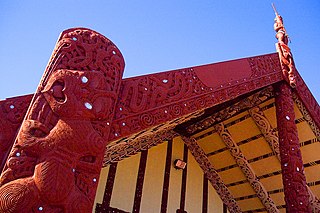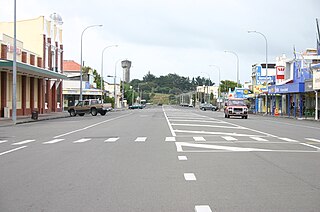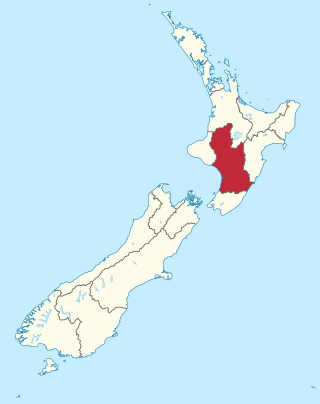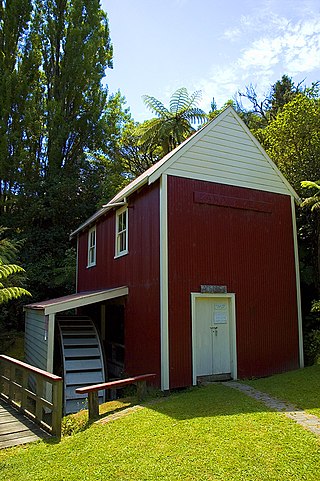
Nelson is a New Zealand city on the eastern shores of Tasman Bay at the top of the South Island. It is the oldest city in the South Island and the second-oldest settled city in New Zealand; it was established in 1841 and became a city by royal charter in 1858.

The culture of New Zealand is a synthesis of indigenous Māori, colonial British, and other cultural influences. The country's earliest inhabitants brought with them customs and language from Polynesia, and during the centuries of isolation, developed their own Māori and Moriori cultures. British colonists in the 19th century brought Western culture and had a dramatic effect on the indigenous inhabitants, spreading Western religious traditions and the English language. Over time, a distinct Pākehā or New Zealand European culture emerged.

Māori culture is the customs, cultural practices, and beliefs of the indigenous Māori people of New Zealand. It originated from, and is still part of, Eastern Polynesian culture. Māori culture forms a distinctive part of New Zealand culture and, due to a large diaspora and the incorporation of Māori motifs into popular culture, it is found throughout the world. Within Māoridom, and to a lesser extent throughout New Zealand as a whole, the word Māoritanga is often used as an approximate synonym for Māori culture, the Māori-language suffix -tanga being roughly equivalent to the qualitative noun-ending -ness in English. Māoritanga has also been translated as "[a] Māori way of life." The term kaupapa, meaning the guiding beliefs and principles which act as a base or foundation for behaviour, is also widely used to refer to Māori cultural values.

Foxton is a town in the Manawatū-Whanganui region of New Zealand - on the lower west coast of the North Island, in the Horowhenua district, 30 km (19 mi) southwest of Palmerston North and just north of Levin. The town is located close to the banks of the Manawatū River. It is situated on State Highway 1, roughly in the middle between Tongariro National Park and Wellington.

Manawatū-Whanganui is a region in the lower half of the North Island of New Zealand, whose main population centres are the cities of Palmerston North and Whanganui. It is administered by the Manawatū-Whanganui Regional Council, which operates under the name Horizons Regional Council.

Wainuiomata is a large dormitory suburb of Lower Hutt, in the Wellington metropolitan area in New Zealand. Its population was estimated as being 19,840 as of June 2023, with a density of 1,600 people per km2. European settlement of Wainuiomata began in the 1850s with timber-felling and farming and began to grow in the 1920s. After World War 2 there was rapid population expansion, with Wainuiomata earning the nickname 'Nappy Valley' because of the large number of families with young children. From the late 1980s the economy slowed and the population decreased, but since about 2020 there has been a housing boom and corresponding increase in population. Wainuiomata is noted for being the origin of New Zealand's kōhanga reo movement.

Motueka is a town in the South Island of New Zealand, close to the mouth of the Motueka River on the western shore of Tasman Bay. It is the second largest in the Tasman Region, with a population of 8,320 as of June 2023.

Horowhenua District is a territorial authority district on the west coast of the North Island of New Zealand, administered by Horowhenua District Council. Located north of Wellington and Kāpiti, it stretches from slightly north of the town of Ōtaki in the south to just south of Himatangi in the north, and from the coast to the top of the Tararua Range. It is in the Manawatū-Whanganui local government region. The name Horowhenua is Māori for landslide.
New Zealanders of European descent are mostly of British and Irish ancestry, with significantly smaller percentages of other European ancestries such as Germans, Poles, French, Dutch, Croats and other South Slavs, Greeks, and Scandinavians. European New Zealanders are also known by the Māori-language loanword Pākehā.
The Māori protest movement is a broad indigenous rights movement in New Zealand. While there was a range of conflicts between Māori and European immigrants prior to the signing of the Treaty of Waitangi in 1840, the signing provided one reason for protesting. Disagreements in the decades following the signing sometimes included war.

Dutch New Zealanders are New Zealanders of Dutch ancestry. Dutch migration to New Zealand dates back to the earliest period of European colonisation. The 2013 census recorded 19,815 people born in the Netherlands and 28,503 people claiming Dutch ethnicity.

The Kawana flour mill near Matahiwi was built in 1854, and is the last remaining flour mill on the Whanganui River and the only remaining 1850s mill machinery in New Zealand.

Netherlands – New Zealand relations is the official relationship between the Kingdom of the Netherlands and New Zealand. New Zealand has an embassy in The Hague and the Netherlands has an embassy in Wellington. The Ambassador to the Netherlands is concurrently accredited to Denmark, Finland, Iceland and Norway.

Putiki is a settlement in the Whanganui District and Manawatū-Whanganui region of New Zealand's North Island, located across the Whanganui River from Whanganui city. It includes the intersection of State Highway 3 and State Highway 4.

Moutoa is a rural community in the Horowhenua District and Manawatū-Whanganui region of New Zealand's North Island, on the Manawatu River. It is located Foxton and State Highway 1 in the west, and Shannon and State Highway 57 in the west.

Te Awahou Nieuwe Stroom is a multi-cultural, multi-purpose visitor and community hub in Foxton, in the southern part of New Zealand's North Island. The facility hosts some 150,000 users annually - to visit the Maori and Dutch museums, the library or the community rooms, the gallery or the heritage room. Locals take care of their affairs in the Council Service Centre.
Rangimahora Reihana-Mete was a New Zealand Māori tohunga raranga and textile artist. She was affiliated with the Ngāti Raukawa iwi. Her artworks are held in the Museum of New Zealand Te Papa Tongarewa. In 1974 she was awarded the British Empire Medal and in 1992 the Order for Meritorious Service from Te Pihopatanga o Aotearoa.
Pip Devonshire is a New Zealand weaver, curator and weaving tutor. Part of the iwi (tribes) of Ngāti Te Au, Ngāti Manomano and Ngāti Raukawa ki te Tonga, Devonshire descends from several notable weavers. She began weaving in the 1980s and graduated from Te Wānanga o Raukawa with a bachelor's degree of design in art in 2000. After graduation she lectured there for two decades. Her works have been exhibited in various New Zealand institutions and galleries, including in the national museum Te Papa. She has also curated various exhibitions and as of 2023 works as a curator at the Mahara Gallery in Waikanae.
Elizabeth Frances (Mitzi) Nairn (1942–2023) was an advocate for women's rights and an anti-racist worker in New Zealand. She spoke about Pākehā respecting Māori under Te Tiriti o Waitangi. She was a founding member of Auckland Committee on Racism and Discrimination (ACORD) and Tāmaki Treaty Workers, and part of setting up Project Waitangi/Network Waitangi.




















